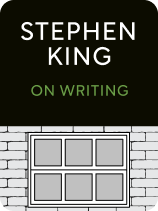

This article is an excerpt from the Shortform summary of "On Writing" by Stephen King. Shortform has the world's best summaries of books you should be reading.
Like this article? Sign up for a free trial here .
Do you want to learn how to create a plot? How does a plot work and how can you write a good one?
Stephen King suggests that when you’re writing you shouldn’t focus on plot. But with that said, your story will need a plot to work, and you’ll need to know how to create a plot.
Keep reading to find out how to create a plot for your story.
The Elements of a Story and Writing Plot
Stories consist of three things you need to know in order to learn how to write a good story plot:
- Narration: telling what happens and moving the story along
- Description: adding sensory details to enliven the story
- Dialogue: how characters talk
These elements are all a part of writitng plot. Notably, plot isn’t on this list. (Shortform note: He doesn’t define “plot” explicitly, but he implies it means “planning what will happen in the story before you actually write it.”)
We’ll cover each element, starting with why King avoids plot, as well as why it actually helps you learn how to write a good story plot.
How to Create a Plot (By Avoiding Plot)
Arranging a plot before the story is written feels artificial. Our lives are plotless—we don’t know in advance what’s going to happen—and that gives life a constantly surprising, entertaining flavor. Writing a story shouldn’t be any different, so when we talk about “writing plot” you’re not actually thinking about how to develop a plot, but working on other elements of the story.
Instead, King believes the story reveals itself as he writes. He doesn’t force the action to move in a particular direction; the characters decide what to do, and he merely narrates what is happening as he observes it. This is one way to decide how to create a plot.
He analogizes writing like this to archaeology: The story already exists, buried in the dirt like a fossil. Your job is to unearth it delicately.
What does this mean, in practice? King typically starts his stories with a situation, then discovers how his characters work their way out of the situation. This is one way to discover how to develop plot.
Interesting situations typically start as “what if?” This is one way to learn how to create a plot.
- Carrie: What if a bullied girl in high school learned she had telekinetic powers?
- Misery: What if a psychotic fan kidnaps a romance writer?
- Cujo: What if a giant dog turns rabid and violent, terrorizing a mother and her son?
- The Dead Zone: What if a political assassin were the protagonist?
From there, he lets the story develop without an ironfisted demand for what should happen. He usually doesn’t know how the story will end. Instead, he watches the characters work their way through the situation. The characters may surprise him with their ingenuity or complexity; King doesn’t know what they’re going to do until they do it. How to develop plot isn’t so much the question as how to write the story as it unfolds.
Writing this way, without plot, helps in a few ways for helping you learn how to create a plot.
- It creates a more truthful story. If you force the arc to move in a particular way, your characters may behave unrealistically, contorted to fit the plot. In contrast, if you merely observe how characters behave, they’ll more likely ring true.
- This style of writing maintains suspense—if you as the author are held in suspense during the writing, your reader probably will be too.
At the end of this section, King challenges you to write a 5-6 page story based purely on a situation he gives you, with no plot.
- The backstory: a woman (Jane) marries a charming man (Dick) who turns out to be controlling, paranoid, and violent. After years of abuse, she divorces him and gets a restraining order, but he isn’t deterred. After a specific incident, Dick is jailed. (This is still backstory—you can include however much you want of this into your story.)
- The situation: Jane drops off her daughter at a birthday party and returns home, happy to have a few hours to herself. When she gets into the house, she feels uneasy—she’s not sure why. She turns on the television and sees a story about three escaped convicts from the jail Dick was at. With dread, she knows one of them was Dick and now knows why she felt uneasy—she’d smelled his distinctive hair tonic faintly. Now she hears footsteps coming down the stairs.
- Now a twist: swap the genders: it’s a man who is being stalked by his ex-wife.
Write a story for this situation without plotting in advance. This can help you learn how to create a plot and how to make it work.
Learning how to write a good story plot is an ongoing process, and it helps if you focus on characters and narration. Writing plot should come naturally as you focus on other elements.

———End of Preview———
Like what you just read? Read the rest of the world's best summary of Stephen King's "On Writing" at Shortform .
Here's what you'll find in our full On Writing summary :
- Stephen King's personal writing habits that led to superstar books like Misery and It
- How to make a story and characters feel real
- Why you should never use adverbs






